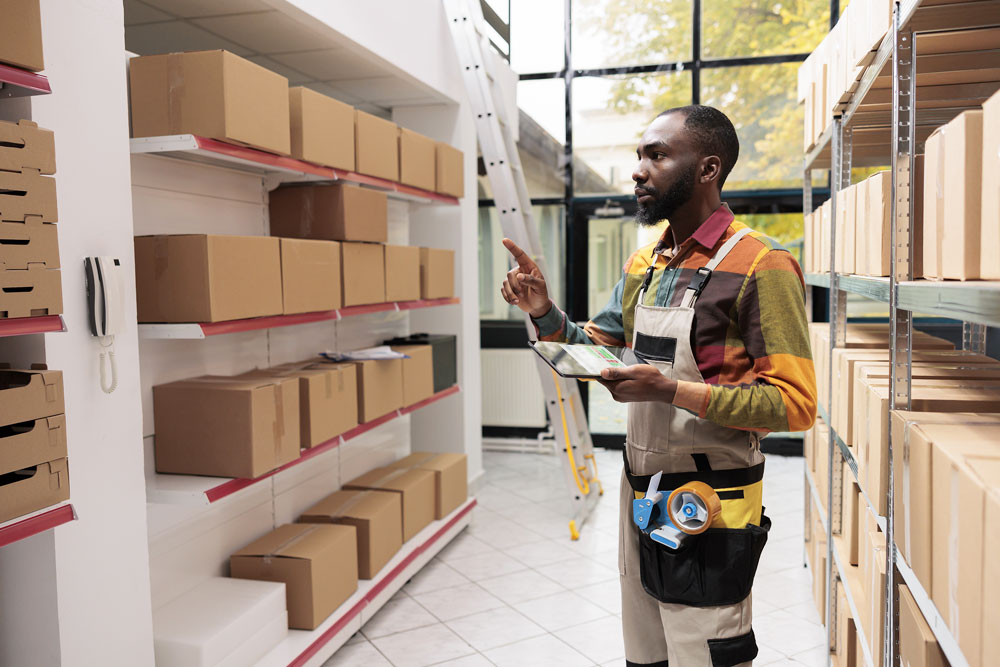Your order management system (OMS) is the brain orchestrating a successful delivery of your product into your customer’s hands. But what if I told you you should rethink the role of OMS in your sales funnel? If you are not thinking about how your OMS can improve customer experience and impact sales, you should.
Orchestrating a perfect customer experience from order to delivery will bring back repeat customers, that is just table stakes. If implemented well, your OMS can drive conversions long before the order is placed. Here are the top ways your OMS can impact your sales funnel:
1. Leverage OMS to get real-time inventory updates
Giving your customers access to real-time inventory availability that drives them to the store to purchase means that you have an intent purchaser entering your store ready to buy. There is a +50% chance that they will buy more products when they get there.
2. Buy online pick up in-store (BOPIS) or Click and Collect
Telling a customer that they can buy online and pick up in store is not as simple as it sounds. It requires commerce and order management systems to work together with the right store processes and systems to support fulfillment. If done well, it has a world of benefits from saving shipping costs to higher in store purchases. Now imagine using real-time inventory and BOPIS together. Let’s call it a Click and Collect Nudge. Your customer is checking in-store inventory, their product’s stock levels are low at their target store. Now imagine an alert in their browser telling them to reserve their item to avoid disappointment. Sale made.
3. Low Inventory or Number of Purchases Alerts
Similar to the BOPIS example above, letting customers know that their beloved product is low in stock or that 1000 people purchased it in the last hour will create FOMO (fear of missing out). It will drive consumers to purchase the product especially if they don’t know if or when it will be back in stock.
4. Cross Sell and Upsell Opportunities
Your OMS is full of data. It can provide insights into customer preferences, and products often purchased together. This information can tell you what products to put near each other in store, what recommendations should be made to customers when purchasing a product, and what bundles would be most advantageous for you to offer your customers. Getting a customer to come back to purchase more can also be facilitated with the data from your OMS. Replenishment recommendations or after-market parts, personalized product offerings are all driven from your OMS data.
The items above are just a few examples of how an order management system can drive sales conversions. There are others, the first step is for you to stop thinking about your OMS as simply an order fulfillment system. Need help? Contact us to help you with your OMS transformation.
Also, check out our blog on driving customer-centric growth with WMS and OMS.
About Pivotree: Pivotree designs, builds, and manages frictionless commerce experiences for brands and their customers around the world. We provide end-to-end solutions and services in Commerce, Data Management, and Supply Chain for hundreds of brands globally.
FAQs
1. How does integrating real-time inventory updates into the sales funnel impact customer behavior beyond driving them to the store?
Integrating real-time inventory updates into the sales funnel can have significant implications beyond directing customers to physical stores. By providing accurate and up-to-date inventory information, businesses can instill a sense of urgency and scarcity, prompting customers to make quicker purchasing decisions. Additionally, it can help optimize inventory management by identifying popular products and reducing overstock. To maximize effectiveness, businesses can employ strategies such as implementing dynamic pricing based on inventory levels, offering exclusive deals for products with limited availability, and leveraging targeted marketing campaigns to drive traffic to stores or online channels.
2. Are there any potential challenges or complexities involved in implementing a Buy Online Pick Up In-Store (BOPIS) or Click and Collect system, and how can businesses address these challenges?
Implementing a Buy Online Pick Up In-Store (BOPIS) or Click and Collect system requires seamless integration between commerce and order management systems, as well as coordination with store processes and systems for fulfillment. Potential challenges may include ensuring real-time synchronization of inventory data across multiple channels, streamlining communication between online platforms and physical stores, and optimizing logistics to minimize wait times for customers. To address these challenges, businesses can invest in robust omnichannel technology solutions, prioritize employee training to facilitate smooth order fulfillment processes, and continuously monitor and optimize the BOPIS experience based on customer feedback and performance metrics.
3. In what ways can businesses effectively leverage data from their order management system (OMS) to personalize product offerings, recommendations, and promotions, and what are some best practices for utilizing OMS data to drive customer retention and repeat purchases?
Leveraging data from the order management system (OMS) can empower businesses to personalize product offerings, recommendations, and promotions, thereby enhancing customer engagement and driving repeat purchases. By analyzing customer purchase history, preferences, and behavior patterns, businesses can tailor marketing messages, create personalized product bundles, and offer targeted promotions to individual customers. Additionally, OMS data can inform inventory planning and replenishment strategies, ensuring that popular products are consistently available to meet customer demand. Best practices for utilizing OMS data include investing in advanced analytics tools to extract actionable insights, implementing automated marketing campaigns based on predefined triggers and customer segments, and regularly reviewing and updating personalization strategies based on evolving customer preferences and market trends.
